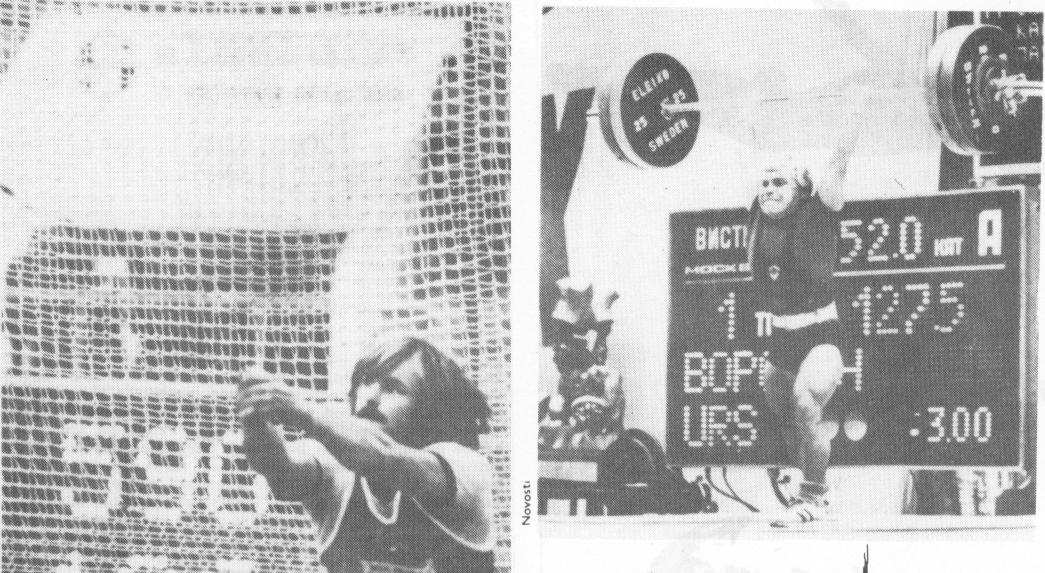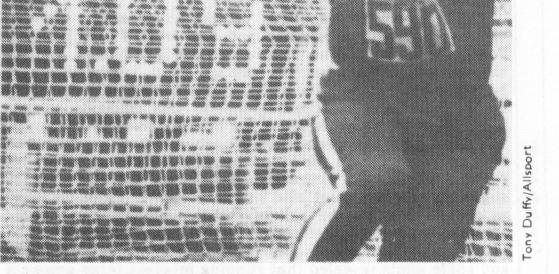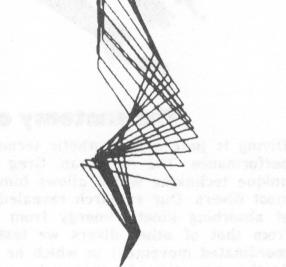| Previous | Index | Next |
![]()
Yuri Sedyh took the gold medal for hammer throwing at the 1976 Olympics in Montreal
At one time, American throwers dominated most field events, including the hammer throw. In recent years, however, Americans have not been able to throw the hammer as far as athletes from the USSR and the Eastern bloc countries. At the Montreal Olympic Games, no American threw the hammer further than the qualifying standard of 226 feet (68.8 metres), although 25 Soviet athletes did so. That year's gold medal winner was Yuri Sedyh, shown in action above.
Our analysis showed that the shorter throws of the American athletes were paralleled by relatively low velocities during the turns, with correspondingly low linear velocities of the hammer. These velocities were low because the Americans displaced their centres of gravity inefficiently.
Pulling on the handle of a hammer, to accelerate it, is like pulling on the knob to open a door that's jammed. If you lean forward with your feet behind you, you cannot pull bade on the knob because you have nothing to pull against. You have to place your feet between your body and the doorknob and push against your feet. If you keep your legs straight as you lean back, you have only your body weight to pull with, but if you bend your legs first you can then push with your leg muscles as you try to straighten them, producing a force greater than your body weight. Another important point is that you can apply the most force to the doorknob by pulling straight out rather than at an angle. This means that you must lower your body so that the arms are horizontal. The American throwers do not use this technique-but the more successful Europeans have perfected it. 0
C B A INC. . PERFORMANCE PROFILE
VRONIN 110 KG
Alexander Voronin, preparing for the
1976 Olympics (above). Computer graphic displays of Voronin's lift (right) and of other East European lifters, showed why these athletes
perform more
efficiently than their
American-counterparts
POSITION 26 -- SEGMENT 00
Weightlifting was once an event of American glory, but the US has now lost its prowess to the Eastern Europeansperhaps because the recent winners have improved their techniques. The graphic display above portrays a Russian weightlifter. Bulgarians, Soviets and East Germans have developed coordinated techniques that allow the lifters to get under the weight when the bar is at a lower point than for the less successful athletes; but the Europeans are still able to accelerate the bar upward from the lower position. Our studies indicate that weightlifters in the US delayed getting under the bar until the bar had begun accelerating downward. They could not therefore lift greater loads because once the weight was descending, a lifter had to overcome the inertial forces and the weight of the bar.
We also observed that, in European lifters, the path of the weight coincides with the path of the athlete's centre of gravity. This was not so with American athletes, who performed less efficiently. O
NEW SCIENTIST July 1980




![]()
| Previous | Index | Next |